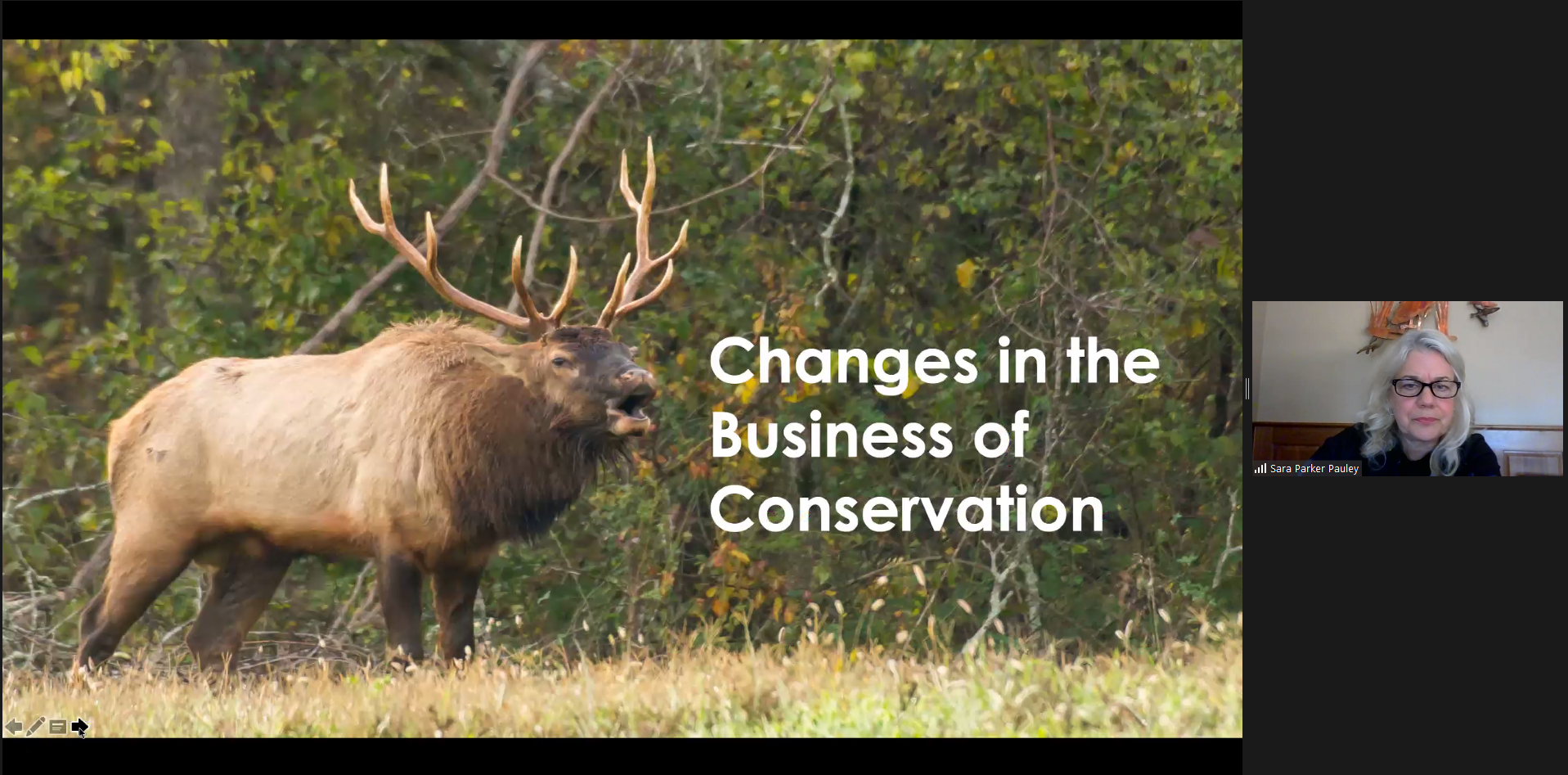A brief summary of the SECAS symposium at SEAFWA

SECAS sponsored a special symposium at the Southeastern Association of Fish and Wildlife Agencies (SEAFWA) annual conference titled SECAS and 30x30: Identifying opportunities and defining outcomes in the Southeast. More than 85 virtual attendees participated in the first formal and inclusive dialogue among fish and wildlife agencies and other conservation professionals in the Southeast around potential outcomes of the America the Beautiful campaign. The symposium set the stage for further examination to align priorities to take advantage of momentum created through this national initiative.
A small planning team of SECAS partners including facilitator Laura Calandrella worked hard to develop an agenda that would help define perspectives, processes, roles, and responsibilities for responding to America the Beautiful in the Southeast, and by all accounts that goal was achieved.
Beginning with a keynote address by Sara Parker Pauley, Director of Missouri Department of Conservation, the symposium revealed common themes and shared perspectives relating to how the Southeast can leverage momentum created by America the Beautiful to build on the success of SECAS, characterized as “the chance of a lifetime to continue what we’ve already begun.”
A stellar group of national and regional conservation leaders participated in an organic discussion focused on how the Southeast is defining what it means “to conserve.” One recurring theme from this discussion centered on the idea of a continuum of conservation actions, from wilderness protections to working lands provisions to private landowner incentives, each of which is a piece of the larger puzzle of conservation in the Southeast. There was repeated reference to the Southeast leading the way for the nation, with SECAS and the Southeast Blueprint providing a solid foundation for helping define that conservation continuum and advance tangible outcomes.
Additional themes centered on increasing the diversity of voices in conservation discussions and getting diverse participants out on the ground, approaching challenges with humility, creating inclusive forums, and seeking innovations to continually improve and adapt. SECAS will continue to be an effective means for moving these themes forward.
A further discussion focused on specific work being done in the Southeast that contributes to defined outcomes supporting America the Beautiful, and included our own Rua Mordecai who summarized recent SECAS, Blueprint, and Goal Report updates and connected with other presenters on the policy and resources to tell the stories on existing proactive and successful approaches.
In the final session, attendees participated in facilitated breakout discussions around identifying important opportunities, the role of SECAS, and recommendations to State Directors and Steering Committee members of the SEAFWA board for addressing America the Beautiful. A treasure trove of perspective and comment was compiled through these breakouts which we will comb through to provide specific direction to SECAS and the Steering Committee in the coming months. Stay tuned for more on how SECAS can leverage the results of the symposium and the momentum from America the Beautiful to advance conservation in the Southeast.